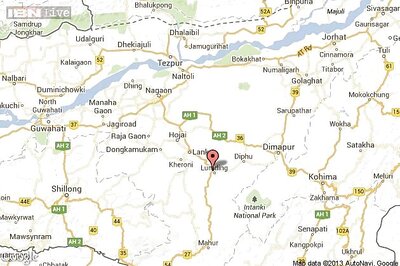
views
Omicron sub-lineage BA.2.12 has been detected in a majority of the samples sequenced from Delhi in the first fortnight of April and it could be behind the recent surge in Covid-19 cases in the city, sources said Thursday. Although there has been no official confirmation, an Indian SARS-CoV-2 Genomics Consortium (INSACOG) source told news agency PTI that Omicron variant derivative BA.2.12.1 has also been found in a few samples in Delhi which is said to be contributing to the recent rise in cases in the US.
The official said the same sub-variants more or less have been found in samples sequenced in neighbouring districts in Uttar Pradesh and Haryana. “The BA.2.12 variant appears to have a growth advantage of about 30% to 90% per week over BA.2 (Omicron),” the official added.
A top virologist, Shahid Jameel, also concurred that the sub-lineage BA.2.12 appears to be more contagious than the other BA.2 sub-lineages and therefore needs to be watched carefully. “We can’t say anything about severity. But since BA.2.12.1 has the L452Q mutation also seen in Delta but not in BA.2, this needs to be watched carefully for its growth and hospitalisation rates,” he said.
How are Omicron sub-lineages created?
Omicron is made up of several sub-lineages, including BA.1 and BA.2, all of which are being monitored by WHO and partners. BA.2 is among the most common now and has a growth advantage over BA.1. These sub-lineages are largely a result of genetic mutations of the virus strain.
When a virus multiplies inside the cells of a living organism, it creates copies of the RNA, a genetic material. However, the process it uses to make these copies often introduces ‘mistakes’. These errors are called genetic mutations.
Mutations that do not help the survival of the virus eventually get eliminated, while others keep getting copied in the next generation of the virus, a report in ThePrint explains.
Mutations in the L452 position of the spike protein — which is part of the receptor binding domain (RBD) — have been previously reported in a number of other variants, including Delta, Epsilon and Lambda.
Data from the US suggest that the BA.2.12.1 may have significantly increased growth advantage over the parent Omicron lineage. According to US’ Centre for Disease Control, the BA.2.12.1 caused 19 per cent of the new cases in the US in the third week of April, up from 11 per cent case a week before and seven per cent a week before that.
Some researchers have suggested that the L452 position of the spike protein is critical for binding to the human receptors, and thus L452Q mutation could potentially enhance the transmissibility of the virus.
Are there other new sub-lineages?
South African scientists have discovered two new sublineages of the omicron coronavirus variant, according to a Bloomberg report. The lineages have been named BA.4 and BA.5, researcher Tulio de Oliveira said in a series of tweets. Still, de Oliveira said, the lineages have not caused a spike in infections in South Africa and have been found in samples from a number of countries.
The two lineages have similar mutations on their spike proteins, the part of the virus that helps the virus attach to human cells, to the BA.2 sublineage which appears to be more infectious than the original omicron strain. They also have some additional mutations, he said.
The two sublineages differ from each other in terms of amino acid mutations outside the spike protein, he said.
Incidentally, South Africa and Botswana were the first to discover omicron in November and South Africa was the first country to be hit by a wave of infections caused by the strain.
Read all the Latest India News here




















Comments
0 comment